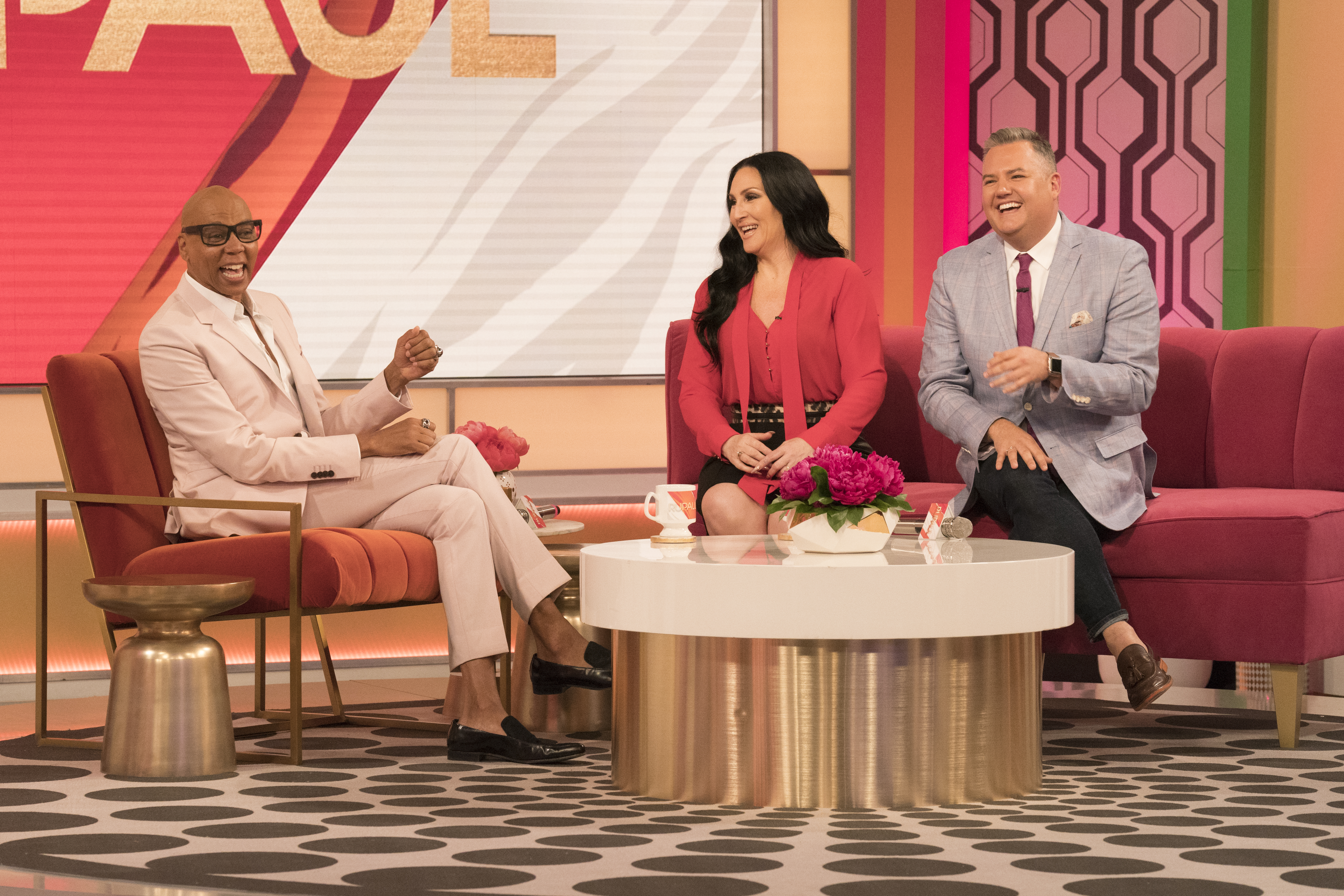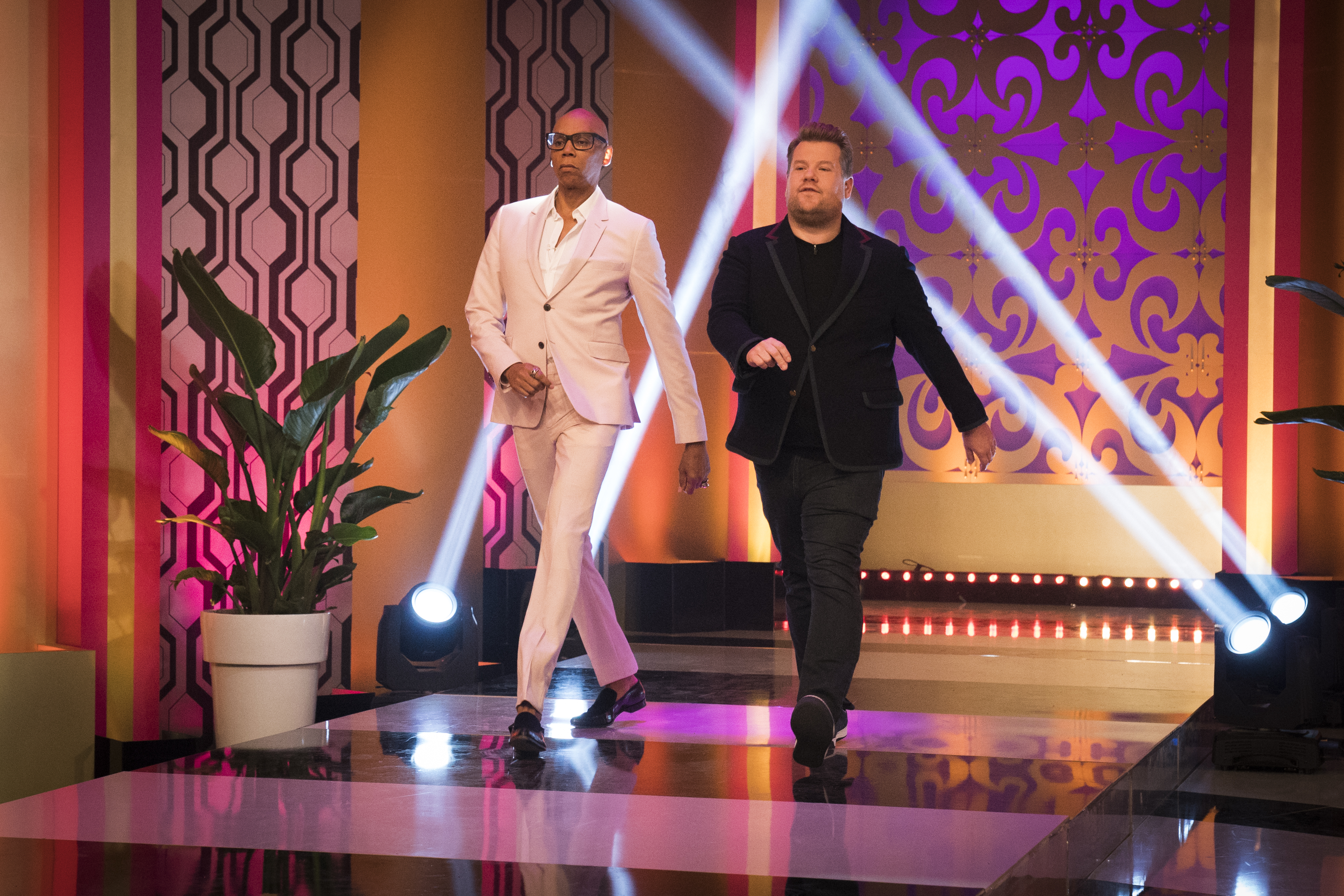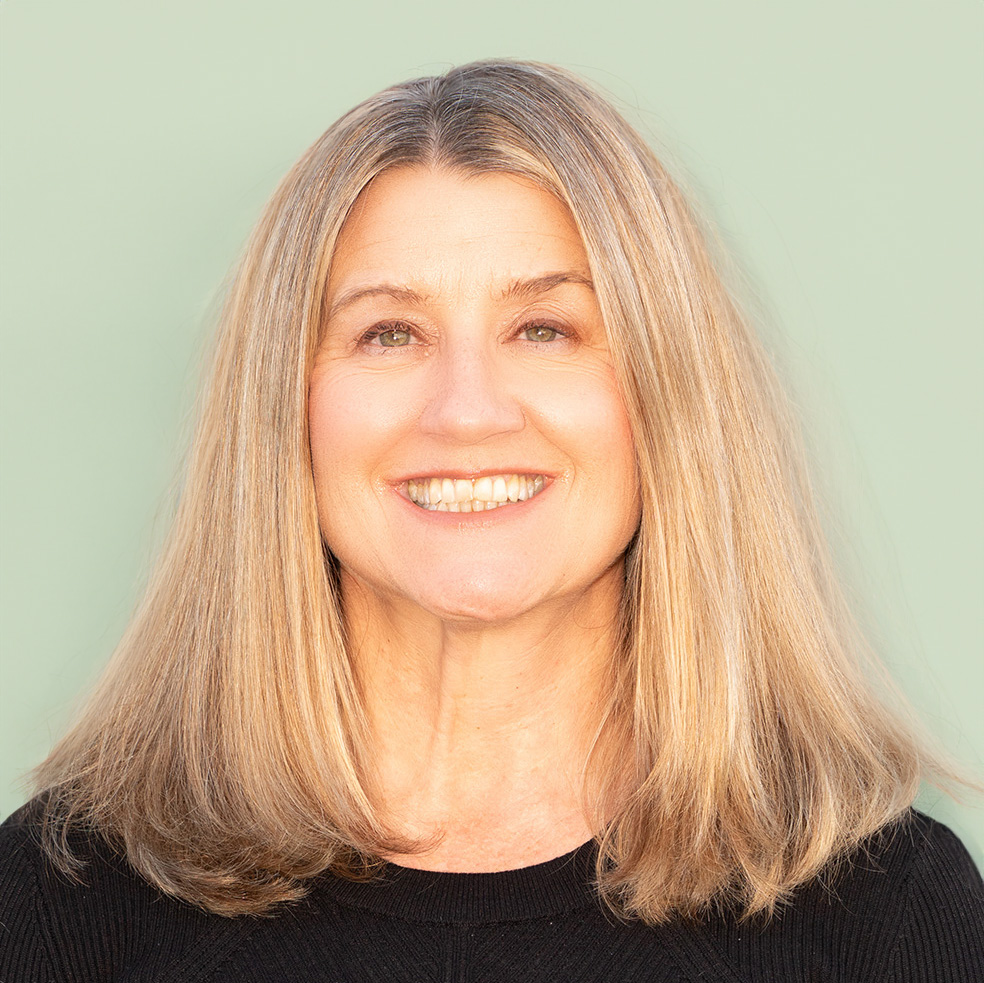RuPaul Lights Up Daytime With His Vibrant Brand

Why This Matters: The more swings taken in daytime, the more chances for new product and breakout hits.
“Everybody say love!”
RuPaul’s been saying that for years, whether on RuPaul’s Drag Race or on his radio show or his podcast or even on The RuPaul Show on VH1 back in the day. And everybody in the audience repeats it. And — more importantly — feels it.

That’s exactly the vibe RuPaul Charles — drag queen, diva, author, recording artist, broadcaster and Emmy Award winner—wants to bring to daytime TV.
On June 10, Fox Television Stations began a three-week, seven-market test of his talk show, The RuPaul Show, which will air through June 28. If all goes well, the show will be sold into national syndication for a fall 2020 start.
RuPaul also is an example of several ways syndication is changing with the times: He is a big name, but was still willing to do a three-week test if that’s what it took to get his show on the air. He’s throwing himself into the marketing and promotion just as if he was launching a national show, with the hopes that he will be. And the show is being offered on several online platforms to give as many people as possible the chance to sample it.
On the surface, though, RuPaul is about glitz, glamour and glitter. He’s about lifting platinum-blonde wigs to the highest heights (and girl, we do mean high, because RuPaul is very tall), sliding into five-inch stilettos and bedecking himself with the latest fashions.
The smarter way to stay on top of broadcasting and cable industry. Sign up below
But that belies what all of it is really about.
“Even as a kid, I wanted to break the fourth wall and say to other people, ‘Is this all kind of weird to you? Does this all seem like it’s an illusion, like it’s someone’s weird joke?’ ” RuPaul said on the set of his talk show, which was housed for this week of tapings on The Real’s set on the Warner Bros. lot in Los Angeles. “It wasn’t until I was about 11 or 12 and I saw Monty Python’s Flying Circus on PBS. And I went, ‘They get it. That’s my tribe right there.’ They didn’t take anything seriously. They were making fun of everything. Nothing was off-limits. There were men in drag, men out of drag, there was everything. And I thought, ‘That’s it. My tribe is out there.’ ”
Making a Space to Play
For RuPaul, drag is more of a guiding principle than a practice. It’s shape-shifting. It’s a way for people to play, to reveal who they really are and to experience something new, different and beautiful. Having helped that tribe find each other, now he brings them with him wherever he goes, and ideally, to a nationally distributed talk show that runs for 20 years. And this time, he won’t be in drag but he will be, of course, very well-dressed.
“You know, drag is not easy to do. It’s very constricting, if you know what I mean,” he said, launching into his signature laugh. “This is more about me hanging out in my living room with my friends having a conversation. I believe that with where we are today — socially, politically, emotionally — in this country, there needs to be an inclusiveness so that people at home can be a part of that conversation.”
Before RuPaul and crew can get to 20 years, they have to get through the test and into national syndication. On Monday, June 10, The RuPaul Show turned in a 0.6 rating/1 share household ratings average, according to Nielsen, in the seven Fox markets on which it is airing. That’s up 20% from its year-ago time periods and even with its lead-ins.
“We gave RuPaul really good time periods and we are also airing the Women’s World Cup right now,” Fox Television Stations executive VP of programming Frank Cicha said. “What I like about all of this is that we have that event happening and we have a brand-new show in half of our group that is fresh and immediate. I love the overall strategy of it.”
It’s early to glean much information from ratings, and the show also is running in the typically slow summer, so Fox will evaluate its performance using more than just the ratings. Fox looks at the production, the talent, the topicality and how it performs on other platforms, including social media. And The RuPaul Show isn’t just airing on TV stations in specific time periods, it’s also available on YouTube, the local stations’ websites and on RuPaul’s own site, so his fans can come and find him whenever they want.
“Ultimately, these things are going to have to be offered in such a way that people can consume them in the ways they want to consume them,” Cicha said.
RuPaul himself understands the game of promotion, so every day he exhorted people to seek out the show online and post about it on social media via @RuPaulShow. And the week after taping wrapped, he hit the road to visit the various markets.
“The show is already a big deal just because RuPaul’s in it,” Cicha said, and that provides an immediate boost to what’s always a challenging and crowded marketing scenario.
From what he’s seen of the show so far, “I think [RuPaul’s] done a very good job,” Cicha said. “I liked him [immediately], because he’s a good listener. That’s gigantic with these sorts of shows. If you can’t listen, you aren’t going to be a good interviewer.”
Over the course of the 15 shows, RuPaul listened to the likes of James Corden, the Property Brothers (Jonathan and Drew Scott), Leah Remini, Matt Bomer, Marcia Gay Harden, Sen. Cory Booker and more, as well as many so-called regular people.
“He’s so naturally curious and he loves hearing people’s stories,” said executive producer Jill Van Lokeren, who previously produced The Oprah Winfrey Show and just completed Michelle Obama’s book tour. “Even off-camera, he goes up to people and he wants to know their stories. I fell in love with him by listening to his podcast. I felt like, ‘Whatever I’m hearing right now is what the world needs to hear right now.’”
Capturing the Intimacy
It’s that sense of intimacy and immediacy that Van Lokeren and Warner Bros. want to capture. The orange-and-fuschia set, which includes a must-walk-down runway, was directly inspired by RuPaul’s living room. Two rows of audience members, which often includes RuPaul’s own family or the family members of his guests, sit on fuchsia velvet couches placed close to the stage.

“It was critical for Ru that the audience felt comfortable and touchable,” Van Lokeren said. “He takes that energy on and that informs how he guides the conversation.”
That’s also why it was important for RuPaul to have his best friends Michelle Visage — who is also his longtime co-host — and Ross Mathews along for the ride. And from a talk-show point of view, it often helps keep the energy up if the host has someone to bounce off of.
“We develop shows — reality shows and talk shows and what have you — and we spend years and months and thousands of dollars trying to do chemistry tests,” said executive producer Randy Barbato, who’s worked with RuPaul for years at production company World of Wonder, which also does Drag Race. “And it never really works.
“But this chemistry already existed. They complement each other and there’s no competitiveness. They just enjoy being together and it comes across on TV.”
Just as RuPaul brings along his friends and family, he also brings the audience. For the entire week of tapings, fans gathered in the parking lot across the street, dressed in their finest attire, waiting for the chance to come visit the queen.
“It’s been kind of scene-y here,” said Tom Campbell, who executive produces along with Van Lokeren and Barbato. “I think all roads have led to this moment. I really do think his entire career is about where we are today.”
When that audience heads into the studio, they get to walk the runway for the chance to be featured as RuPaul’s “Slay of the Day.” The selected “slays” range from a group of Beyoncé’s backup dancers, to a woman with modeling experience, to a 14-year-old boy who drops into the splits at the drop of a hat.
The talk show is not the only thing RuPaul has going on — in fact, far from it. He has a new scripted show, AJ and the Queen, coming out on Netflix later this year. He’s getting ready for season 12 of Drag Race, for which he’s won three Emmys as best host of a reality competition series. And he has his podcast, What’s the Tee, also cohosted by Visage, which has been running for five years.
‘Always Room to Grow’
It all makes it seem like RuPaul has single-handedly brought the culture of drag out of the closet, so to speak, but Visage said there is always room to grow.
“Drag Race is not mainstream,” she said. “It has gotten more mainstream, but it will never be mainstream because Bob and Betty Beer Can are not really going to understand what we’re all about; they’re just not and there’s nothing wrong with that. But the people who need us find us and I am not amazed by it, I am grateful for it.”
Chimed in Mathews, “Do you think Wendy Wine Cooler will get it?” and he and Visage break out in laughter, just as they do on set.
“I’d like to be talking to you in 20 years about that fun ride we went on with our friend Ru,” Mathews said. Both came to the show every day to chat up celebs and so-called regular people with their effervescent friend.
On one level, it’s all in the service of having fun, and on another, it’s about loving and accepting people for exactly who they are, and doing that on a daily basis on television.
“I learned early on in show business that if you’re not having fun, the audience isn’t either,” RuPaul said. “And I had fun doing every single show.”
Contributing editor Paige Albiniak has been covering the business of television for more than 25 years. She is a longtime contributor to Next TV, Broadcasting + Cable and Multichannel News. She concurrently serves as editorial director for The Global Entertainment Marketing Academy of Arts & Sciences (G.E.M.A.). She has written for such publications as TVNewsCheck, The New York Post, Variety, CBS Watch and more. Albiniak was B+C’s Los Angeles bureau chief from September 2002 to 2004, and an associate editor covering Congress and lobbying for the magazine in Washington, D.C., from January 1997 - September 2002.

